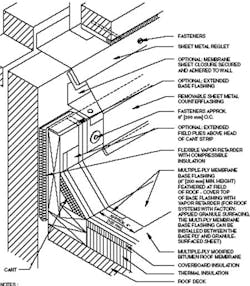Understand Electric Motor Operation to Reduce Ownership Costs
Motors use more energy than any other single appliance type in the world. In your building, electric motors operate a range of equipment (pumps, fans, compressors, etc.). Moreover, the annual electric cost to operate a heavily used motor can be 5 to 10 times its purchase price, so it is important to evaluate the total cost of ownership when buying a motor. Knowing the fundamentals can lead to big energy savings.
A motor is not a smart device. It is only a construction of magnets and wires. There is no computer or ability to make decisions. The motor simply converts electricity into magnetic energy, which is used to induce a rotation of the shaft. When a motor turns on, it spins as fast as it can, although the speed (rotations per minute or RPM) is governed by the no-load RPM equation below:
Because most of the variables on the right-hand side of this equation cannot be easily changed, motors have no-load RPMs that are predictable if you know how many magnet pole pairs were installed within the motor. In the U.S., where the electric grid operates at 60 Hz, the no-load RPM intervals are 900, 1800, 3600, etc.
When you look on the name plate of a motor (see sample below,) it will have an RPM listed, which is the full-load RPM. This RPM is usually slightly less than the predictable no-load RPM intervals.
Figure 1 - Typical Motor Nameplate Information
No-load RPM and full-load RPM can be explained with a bicycle analogy. When you are riding a bicycle on flat ground, you will reach a speed at which your legs cannot rotate the foot pedals any faster. That speed would be analogous to the no load. However, if your bike goes up a hill, you would experience load and the rotations of the pedals slow down.
By measuring the RPM of a motor (how much it slows down under a load), you can estimate the load. You can also estimate the load on a motor by measuring its amp draw and comparing it to the full-load amp (FLA) draw, which is often listed on the nameplate as FLA. For example, if you measure 70 amps on an operating motor with a capability of 100 amps, then the motor is about 70% loaded.
Another important piece of information to get from the nameplate is the “locked rotor amps,” which is the inrush current when the motor starts up under full load. Referring back to the bicycle analogy, this is similar to when you're halfway up a hill and you stop. When you start again, you must put all your weight and muscle onto one pedal to get the bike to roll and gain momentum. This very short period of pain in your leg would be analogous to inrush current when a motor starts on full load.
Inrush current can be 20 times higher than the full load amp draw of the motor, although it only lasts for a second or so. Nevertheless, it is possible to set a new peak electric demand if you turn on multiple motors at the same time. One way to reduce the risk of setting a new peak is to stage the starting times of large motors and/or install soft starters that slowly increase the amp draw.
Because there is a lot of torque required to start a large motor, most use 3-phase power, which is analogous to having three pedals on a bicycle. Separated by an angle of 120 degrees, you would always have one pedal positioned to provide maximum torque on the down stroke.
AC induction motors cause the electrical supply’s power factor to lag. If your facility has a lot of motors or other devices that convert AC electricity into magnetic fields, your power factor may become low enough that the utility will charge you a power factor penalty. Many utilities assess a penalty if power factor drops below 85%; some charge below 100%. A relatively easy solution is to install capacitors upstream to maintain high power factor. On most motor nameplates, you will find maximum kVAR, which indicates the size of the capacitor needed to correct the power factor lag of the motor. However, before buying a capacitor, consult an engineer or someone having experience with capacitor systems. An expert may also give advice about installing a series of capacitors to maintain power factor for your entire facility.
Service factor could be retitled as overload factor. It tells you how much you can overload a motor without consequence. For example, a service factor of 1.15 means you can overload a 100 hp motor to 115 hp without any significant damage to the motor.
Electric motors maintain high efficiency even under a partial load. Efficiency stays high all the way down to about 20% load. The figure below illustrates how a motor’s efficiency is related to load. Most motors you will encounter might have an average load of 50%. If it's an HVAC motor, you could expect this load would be a little higher in the summer and a little lower in nonpeak periods. However, if you find that a motor is operating at less than 20% load most of the time, you want to right-size the motor to increase efficiency.
Figure 2 - Motor Efficiency vs Load
Although there is no significant efficiency advantage to right-sizing a motor that is only 50% loaded, there is an advantage to installing a variable speed drive (VSD) on any motor that is part loaded for a significant portion of the year. The VSD would allow the flow (air, water or any fluid) to be adjusted to match the load.
Historically, variable flow has been achieved via a number of approaches. You may already have an outlet damper installed (this device looks like shutters on a window) to choke off the airflow after it exits the fan. An inlet vane damper does the same by choking off the flow entering the fan. These devices are not very efficient because it is analogous to driving your car with your foot on the accelerator and controlling your speed with the brake. If you see these devices on fans or pumps, it's probably best to replace them with a variable frequency drive (VFD) that will adjust the speed of the motor by manipulating the frequency of the electrical current going into the motor. As many readers know, the savings from VSDs can be 50% or more, so that is really worth knowing!
More information about the savings associated with VSDs can be found in this earlier article: http://www.buildings.com/article-details/articleid/17952/title/the-magic-of-variable-speed-drives. However, I would consult an expert before implementing a VSD solution. You want to be sure everything is compatible and will operate well.
For a short webinar on this topic, visit https://www.profitablegreensolutions.com/special-samples.
---------------------------------------------------------



